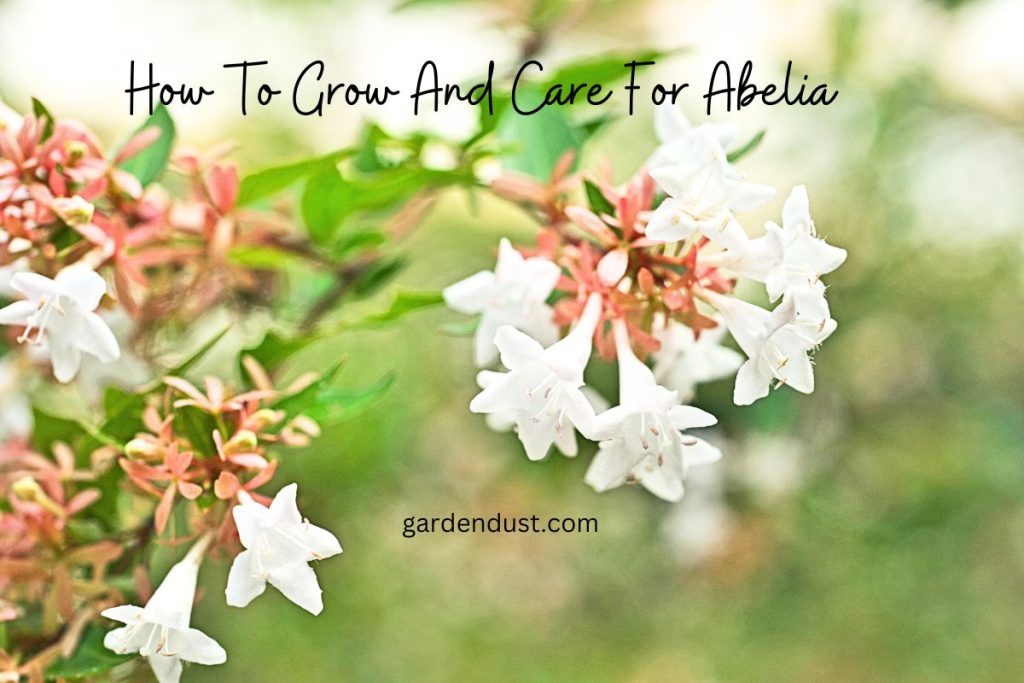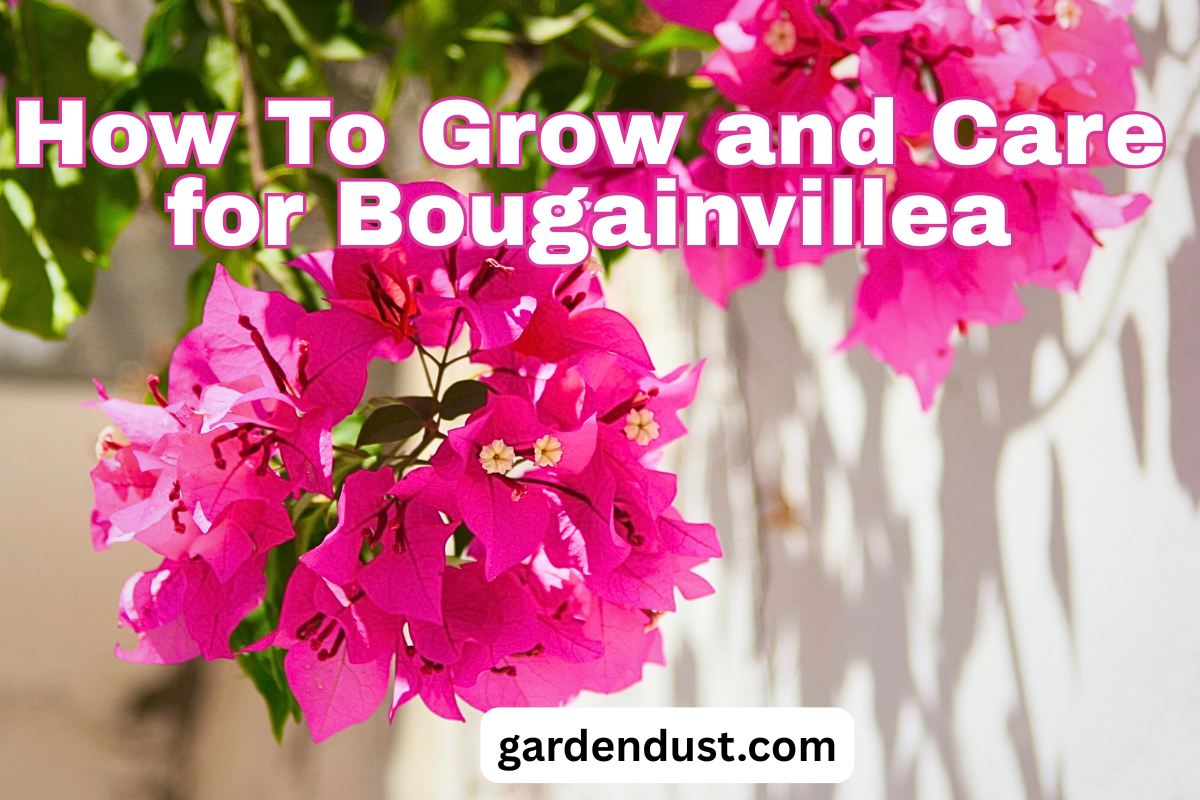Abelia, with its graceful arching branches and abundant clusters of fragrant flowers, is a versatile and visually appealing shrub that can enhance the beauty of any garden. This comprehensive guide will delve into how to grow and care for Abelia, covering everything from choosing the right variety to providing optimal conditions and addressing common challenges. Let’s begin…
Botanical Name– Abelia x grandiflora
Native– Abelia x grandiflora is not native to any specific region; it is a hybrid plant.
Genus– Abelia
Common Name-Glossy Abelia
Flower Colour- White or pink
Plant Type-Deciduous or semi-evergreen shrub
Blooming Time-Late spring to early fall
Understanding Abelia:
1. Varieties of Abelia:
Abelia comes in various species and cultivars, each with unique characteristics. Common varieties include:
- Abelia x grandiflora: A popular hybrid with glossy green leaves, producing fragrant white or pink flowers.
- Abelia chinensis: Known for its upright growth and clusters of tubular, white flowers.
- Abelia mosanensis: Features fragrant, tubular white flowers and a more compact form.
2. Choosing the Right Variety:
Selecting the right variety depends on your specific gardening needs and preferences. Consider factors such as size, flower color, and growth habit when choosing an Abelia for your garden.
READ ALSO:-How to Grow Ginger Lily
Planting Abelia:
1. Ideal Planting Time: The best time to plant Abelia is in the early spring or fall, allowing the plant to establish its roots before the onset of extreme temperatures.
2. Selecting a Planting Site:
- Sunlight: Abelia thrives in full sun to partial shade. Ensure the chosen site receives at least 4-6 hours of direct sunlight per day.
- Soil: Abelia prefers well-draining soil. Incorporate organic matter like compost to improve soil fertility and drainage.
3. Planting Procedure:
- Dig a Hole: Dig a hole that is twice as wide as the root ball of the Abelia.
- Positioning: Place the plant in the hole, ensuring it sits at the same depth as it did in the nursery container.
- Backfill: Fill the hole with soil, gently pressing down to remove air pockets.
- Watering: Water the newly planted Abelia thoroughly to help settle the soil.
Watering and Moisture:
1. Watering Frequency:
- Establishment Period: Water regularly during the first growing season to help the plant establish a robust root system.
- Mature Plants: Once established, Abelia is relatively drought-tolerant. Water deeply when the soil is dry to the touch.
2. Mulching: Apply a layer of organic mulch around the base of the plant to retain moisture, suppress weeds, and regulate soil temperature.
Fertilizing Abelia:
1. Fertilizer Type: Use a balanced, slow-release fertilizer in the spring to provide essential nutrients.
Alternatively, incorporate well-rotted compost around the base of the plant.
2. Application Guidelines: Follow the recommended application rates on the fertilizer packaging. Apply fertilizer in early spring before new growth begins.
3. Avoid Over-Fertilizing:
Excessive fertilization can lead to lush foliage at the expense of flowers. Follow the recommended guidelines to maintain a balanced growth.
Pruning and Shaping:
1. Pruning Time: Abelia generally benefits from pruning in late winter to early spring before new growth emerges.
2. Pruning Objectives:
- Shape and Size: Prune to maintain the desired shape and size of the plant.
- Removing Dead Wood: Remove dead or damaged branches to encourage healthy growth.
- Encouraging Blooms: Prune lightly to stimulate new growth and encourage abundant flowering.
3. Techniques for Pruning:
- Shearing: For a formal appearance, shear the outer branches to shape the plant.
- Selective Pruning: Use selective pruning to remove specific branches for a more natural, unstructured look.
Dealing with Common Pests and Diseases:
1. Pest Management:
- Aphids: Blast aphids off the plant with a strong stream of water or use insecticidal soap.
- Scale Insects: Remove scale insects with a soft brush or cloth. For severe infestations, consider insecticidal treatments.
- Spider Mites: Increase humidity around the plant to deter spider mites. Insecticidal soap can also be effective.
2. Disease Prevention:
- Powdery Mildew: Ensure proper spacing between plants for good air circulation. Apply fungicides if powdery mildew becomes problematic.
- Leaf Spot: Remove infected leaves promptly, and consider applying fungicides during wet periods.
Winter Care:
1. Mulching: Apply a layer of mulch around the base of the plant in late fall to insulate the soil and protect the roots during winter.
2. Wind Protection: In areas prone to strong winter winds, consider providing a windbreak to shield Abelia from desiccation.
3. Pruning for Winter: Avoid heavy pruning in the fall, as it can stimulate new growth that may be vulnerable to winter damage.
Propagation of Abelia:
1. Propagation by Cuttings:
- Select Healthy Cuttings: Choose healthy, non-flowering shoots for cuttings.
- Preparation: Dip cuttings in rooting hormone for better success.
- Planting: Plant cuttings in a well-draining potting mix and keep them consistently moist until roots develop.
2. Propagation by Layering:
- Choose a Suitable Branch: Select a flexible, young branch close to the ground.
- Wounding the Branch: Create a small wound on the underside of the branch.
- Layering: Secure the wounded section in contact with the soil, covering it with soil and securing with a stake.
- Root Development: After roots develop, detach the layered section from the parent plant and transplant.
Final Tips for Successful Abelia Care:
1. Monitoring for Signs of Stress: Regularly inspect leaves for discoloration, wilting, or signs of pest infestations. Adjust watering and care practices based on the specific needs of your Abelia.
2. Encouraging Beneficial Wildlife: Attract natural predators like ladybugs and predatory beetles to help control pest populations.
3. Diversity in Planting: Surround Abelia with a diverse array of plants to create a healthy and balanced ecosystem.
Growing and caring for Abelia can be a truly rewarding experience, adding vibrancy and elegance to your garden. By understanding the specific needs of your chosen Abelia variety and providing consistent care, you can enjoy a flourishing landscape adorned with the enchanting beauty of this versatile shrub. Whether you are a novice gardener or a seasoned enthusiast, the key to success lies in attentiveness, patience, and a genuine love for nurturing nature’s wonders. Happy Gardening…







